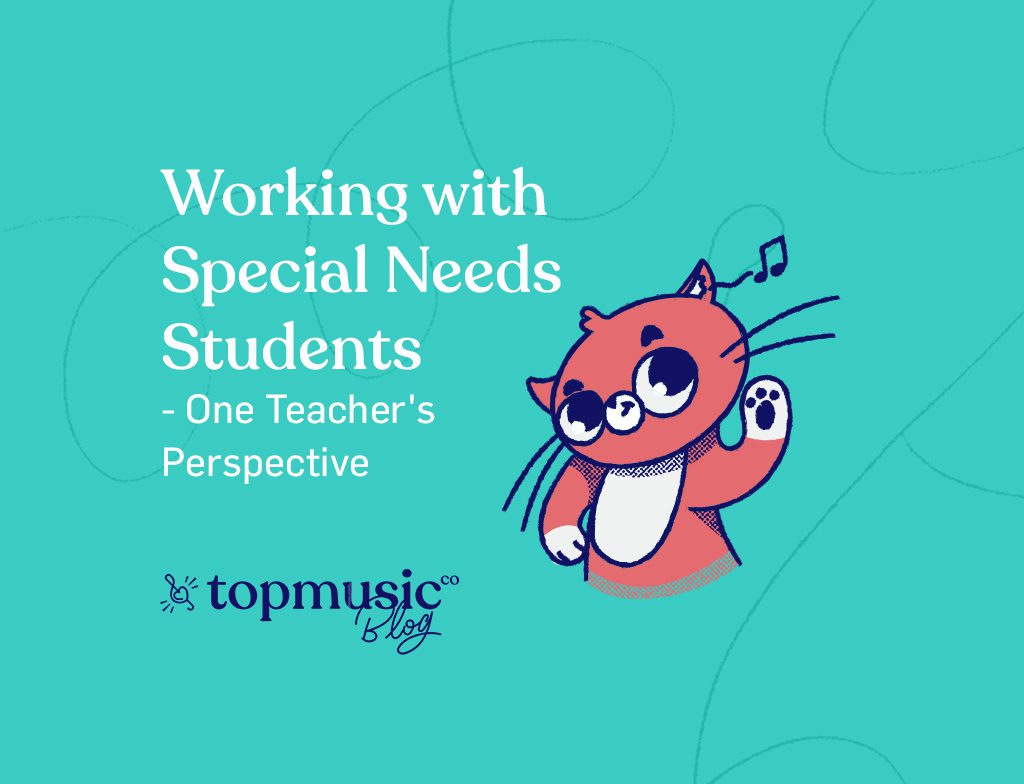Learn one teacher’s encouraging perspective about teaching special needs students
Editor’s note: This article on working with special needs students from a teacher’s perspective first appeared in Piano Bench Mag, reprinted with permission.
I have been teaching music for over twenty years – babies to 87 years old. At one point, I had just under four hundred students in my studio – three-quarters of them with special needs.
When I first started teaching piano in 2000, there were no studios in my area open to the idea of teaching to students with special needs. Parents called me saying their child wanted to learn but had been turned down because, according to the teachers, if their child could not talk, or had a disability of any kind they would never learn to play. It was heartbreaking and obviously not true.
It became clear that I needed to create a fully inclusive studio that was not only supportive to the student socially, but focused on the “Ability” of each student, engaged the parent, educated the community and gave the students the education they deserved.
My studio quickly blossomed, and many of my students have stayed with me for over ten years.
I’ve taught students of all kinds including typical children and those with Symbrachydactyly, ADD, Autism, Down Syndrome, Global Cognitive Disorders, Developmentally Delayed, Prader-Willi Syndrome, the blind, non-verbal children, the hearing impaired, the list goes on.
All have done amazingly well and have given me the best education I could ever ask for.
For most teachers, the idea of offering lessons to a student with a special need can be very daunting.
If you are considering an inclusive studio, here are five simple tips to get you started.
There is much information on every special need out there, and it can be very overwhelming.
Reading necessary information is good, but you don’t need to go to the library and borrow fifteen books. Having a general understanding of your student’s special need is just fine and will help you navigate your lessons better. But remember, general information is just that. Every student is different, just like your neurotypical students.
Related: Consult our roundup post of special needs teaching resources and interviews
I always interview my families before lessons start.
If I know a student has a special need, I will have a phone conference with parents, so I don’t have to speak in front of the child. Then I have a first lesson so I can see how the child interacts with me and the environment.
Here’s a secret:
I can handle the child. What I’m really watching for is the parents’ engagement in the lesson.
If I see mom on her phone or not listening, most likely practice at home is not going to work. Parents have to be engaged in lessons.
A word of caution – sometimes parents are overengagers, then you have to step in and ask them to reserve questions for after the lesson. The student needs to understand who is in charge.
Most importantly be honest with your parents. Once you have established the special need with your parents, ask questions. If you run into a roadblock, tell them. Find out how to communicate best with your student, what stressors they have and what might comfort them.
It is my firm belief that it is our obligation as educators to understand how each student learns. And this applies to all students, not just those with special needs.
Is your student a
How do you, the teacher, communicate abstract thoughts?
If you can determine this, it will make a massive difference in how you present information during a lesson, how your student retains information, and how your students respond to you.
Do you need special tools or methods to teach students with special needs?
Not really, but there are many things you can implement into your lesson time that will make that 30 minutes easier and more understandable for your students and ease their anxiety.
For example, if your student is in ABA therapy, ask mom what they are comfortable with and try to incorporate some of those tools into class.
A good start is to structure your lesson visibly. Use a clock and a schedule of what will happen and when during the lesson. Students like structure and are more comfortable with it. Allow your student breaks as needed, just some time to get up and move. Throughout lessons, your student’s focus at the piano will increase and break time will decrease.
Regarding methods, some traditional methods work, some don’t. Most of the time, I customize my lessons to the learning ability of my student using my own curriculum that is both playing and reading-based. I usually don’t use a book. It’s too much visually for most of my students.
The most important thing is to open your mind to alternative ways of thinking and keep communication open with your student and parents.
Remember, you are your student’s best advocate.
For these families, the ability to have someone believe in them, and teach them a skill they have always wanted to learn means everything.
It will touch your soul the first time you see your student in a recital or speak for the first time in class, not to mention seeing the confidence and communication improvement that evolves.
What about your students — have you ventured into offering special needs lessons? What is one thing you’ve learned works the best in this area? Let me know in the comments!
